If you're travelling to Vietnam, you may be trying to work out how to spend your time in the country's major cities - Hanoi, the capital in the north, and Saigon, the commercial centre in the south.
We've run a comparison between the two cities to help you make your choices.
We’re into historic, tasty, photogenic places, with lots of local character - so these are the things that form the basis for our recommendations.
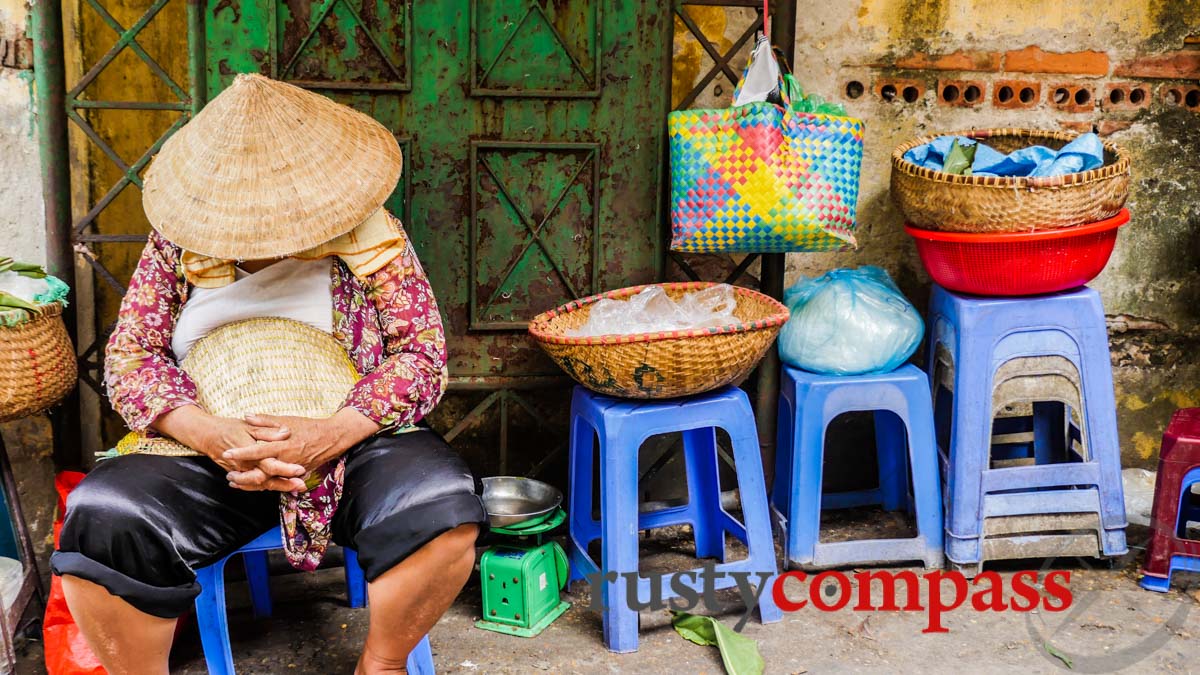
Photo: Mark Bowyer Hanoi has its charms.
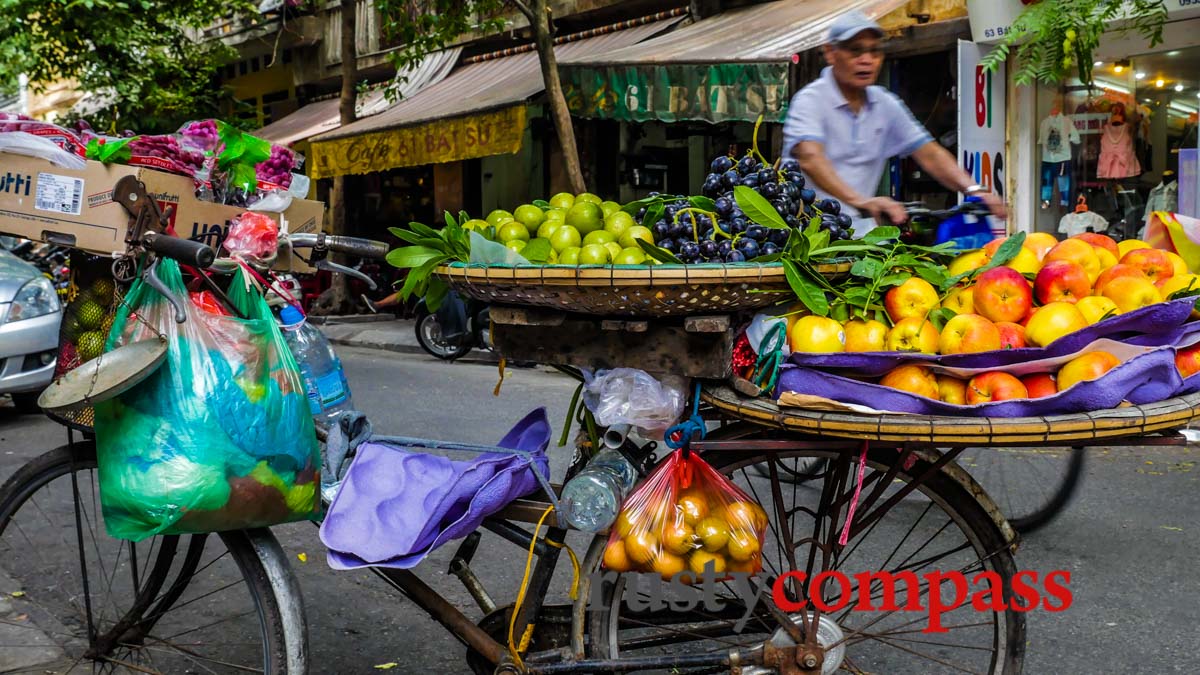
Photo: Mark Bowyer Hanoi
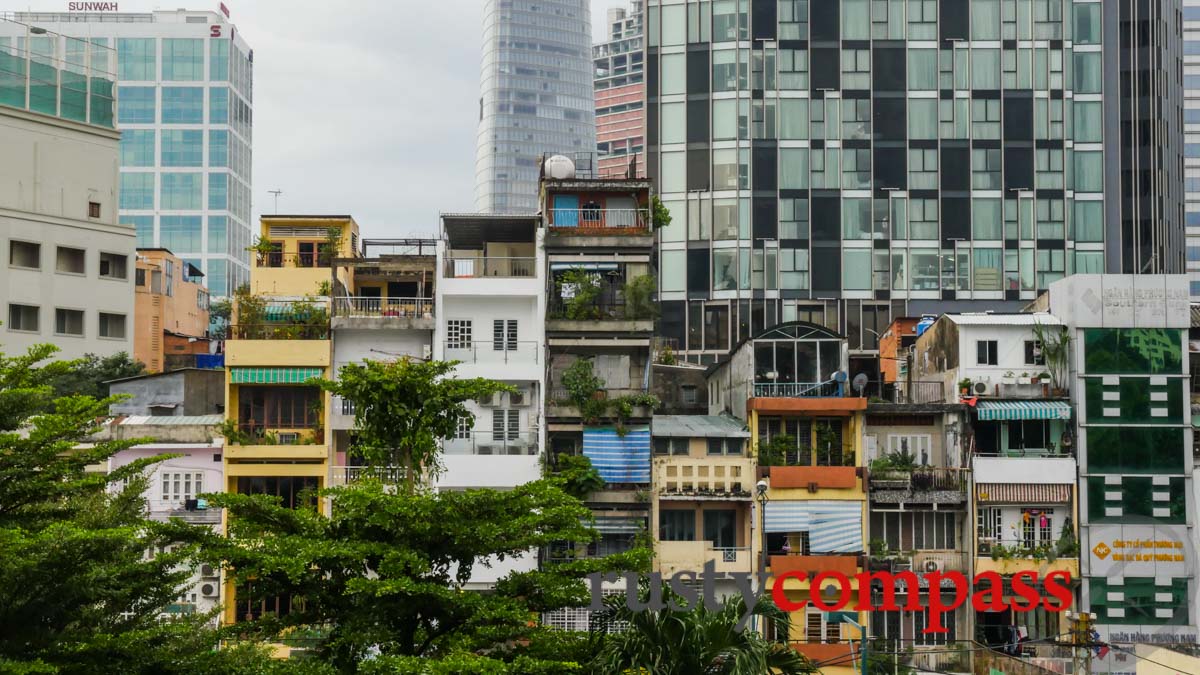
Photo: Mark Bowyer Saigon fabric
The verdict first
Just in case you don't have time to read this lengthy piece in its entirety, I reckon both Hanoi and Saigon are pretty special places - for very different reasons.
If you’re short on time though, Hanoi offers a more unique experience of Vietnamese culture, history and cuisine. And it’s one of the most visually exciting places I know.
Hanoi also enjoys access to other Vietnam travel highlights like Halong Bay, Sapa, Ha Giang and the northern mountains. A big advantage.
It’s a little sad to arrive at this conclusion, as I’ve spent a good part of the past 20 years in Saigon, promoting the city as a tourism destination - and I still love the place.
Saigon's taking an additional hit right now because it's in the midst of a construction boom that's tearing out the heart of the city. We hope something wonderful's going to emerge in a few years - but there seems to be cause for doubt. So far, heritage, cultural spaces and parks have not been priorities for city planners.
Hanoi doesn’t win on all counts. Saigon is friendlier, tastier, has a more diverse nightlife, a better climate and an all-round more vibrant feel. Pollution’s a problem in both cities but Hanoi’s problems are becoming severe.
Saigon's advantages make it more liveable than Hanoi, but not a more interesting travel destination.
I've met loads of travellers who love Saigon and loathe Hanoi - and vice versa. There's obviously plenty of personal preference in all this - though I've tried to focus on things that can be quantified in some way.
Still, this is a subjective guide - one traveller’s view. It covers things to do, history and heritage, eating, things nearby, walking, nightlife, people, safety and the environment.
We'd love to see Vietnam's two major cities in a vigorous contest for supremacy as cultural, historical and sustainable tourism destinations. We hope this piece can contribute to the conversation.
Things to do - our verdict, Hanoi
Sorry Saigon, but Hanoi wins this race hands down. Hanoi's streetlife is amazing. There's so much happening - and it's uniquely Hanoi. It’s a street photographer’s dream. Saigon ain’t bad either. But the downtown area is losing a lot of its charm - especially during these years of construction upheaval.
You can easily spend a day or two wandering aimlessly around Hanoi’s streets - you’ll be amazed by what you’ll find.
Hanoi's formal tourist sights are more interesting and diverse than Saigon's too. Exploring Ba Dinh Square - aka. the Ho Chi Minh Quarter, Hanoi Citadel, Hoan Kiem Lake, Temple of Literature, and the tree lined boulevards of colonial architecture, will give you a good sense of Vietnam’s rich past.
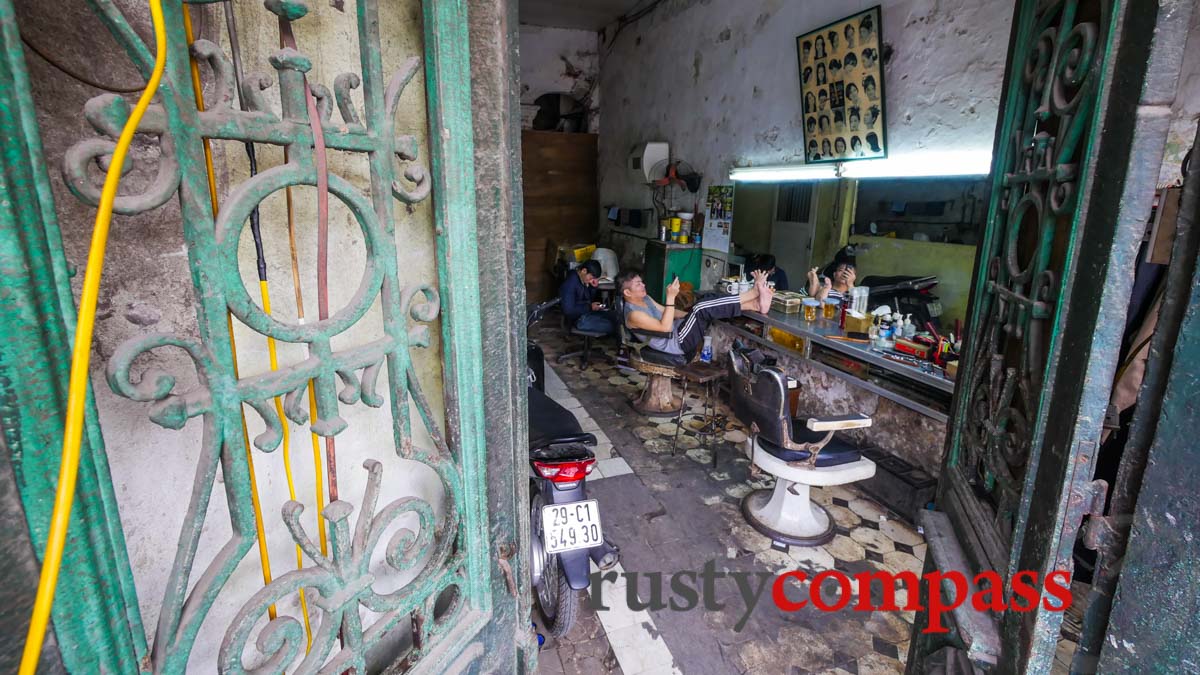
Photo: Mark Bowyer Uniquely Hanoi
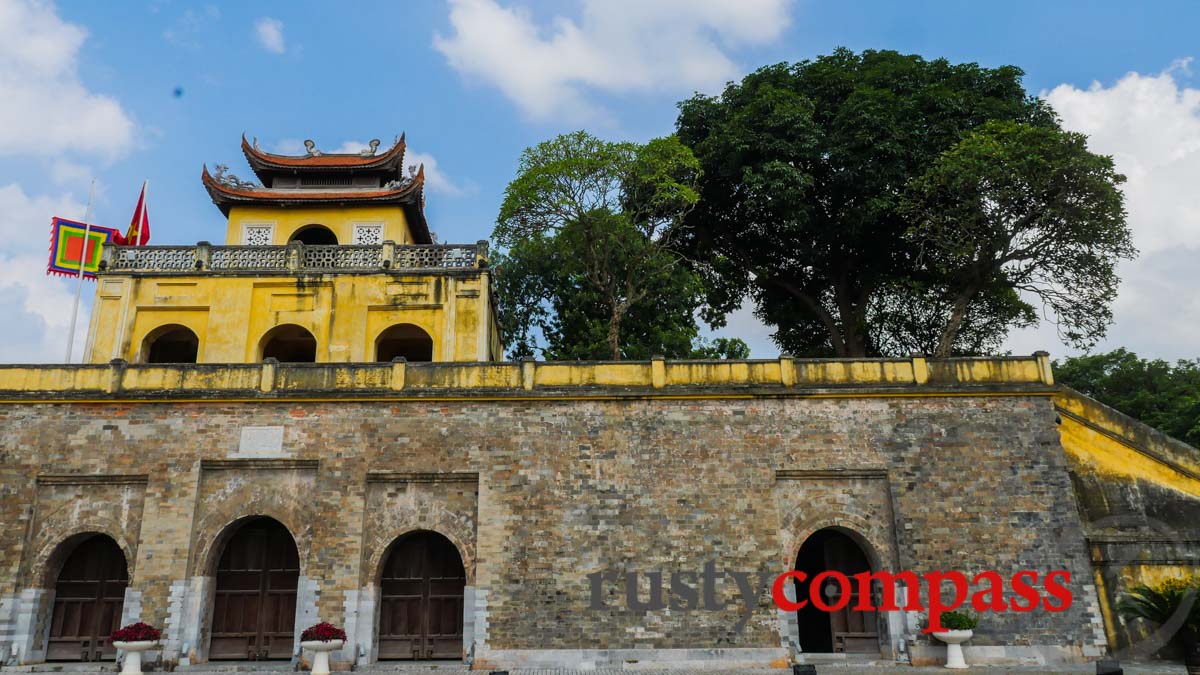
Photo: Mark Bowyer Hanoi's Thang Long Citadel
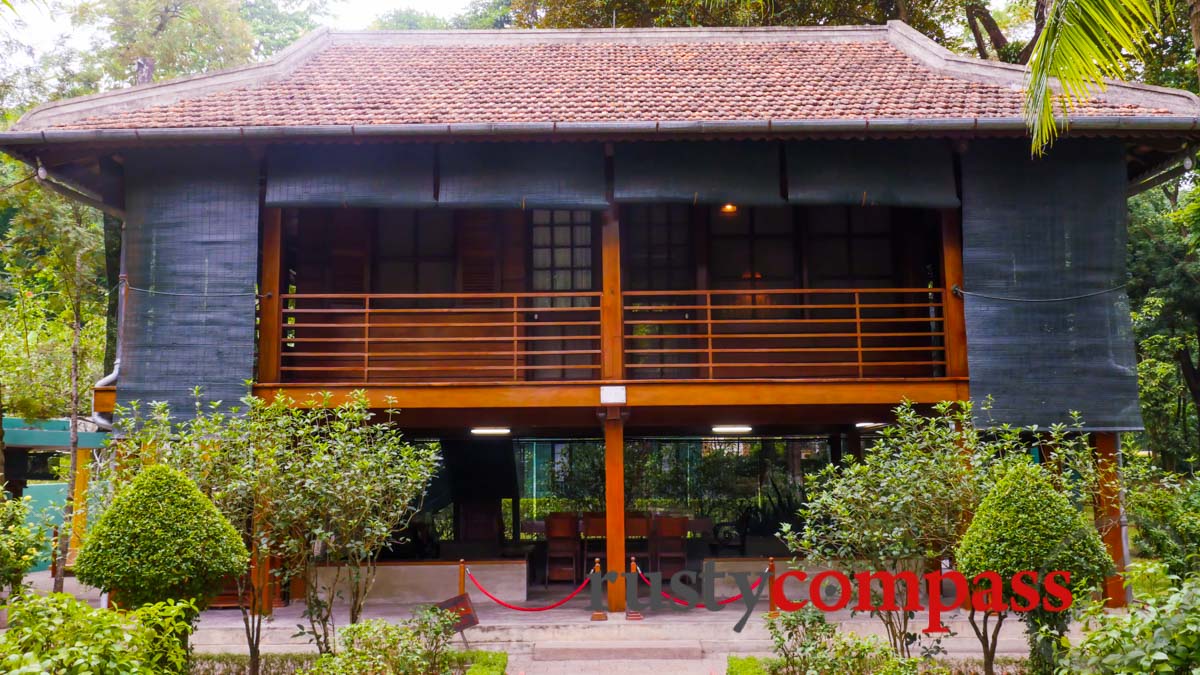
Photo: Mark Bowyer Uncle Ho's House on Stilts, Hanoi

Photo: Mark Bowyer War Remnants Museum, Saigon
Museums have been one of the most neglected features of Vietnam's 25 years of tourism development - but they're in better shape in Hanoi as well. Hanoi’s Thang Long Citadel is especially interesting - and may well be Vietnam’s most important historical site. It sees surprisingly few tourists.
Saigon's lonely colonial monuments, Notre Dame Cathedral and the Post Office are worth a look - but they’re modest compared to Hanoi’s architectural offerings. The Reunification Palace and the War Remnants Museum are Saigon’s most popular museums and both are interesting.
Hanoi's lakes, parks and wide streets (excluding the Old Quarter) make it more hospitable to travellers than the ever-more congested streets of Saigon.
History and heritage - our verdict, Hanoi
Hanoi started way ahead in terms of history and built heritage - it was an ancient capital of Vietnam from the 11th century, and the French made it their colonial capital as well. And you can still follow this evolution as you wander the city streets. There are traditional temples, ancient structures like the citadel, and a collection of colonial era stunners. Then there’s the new stuff. It’s a riveting collision.
By comparison, Saigon’s a new city - just over 300 years old. And it's showing no sentimentality for its limited heritage. Saigon’s in the latter stages of a cleansing of historic architecture that has widened the heritage gap with Hanoi.
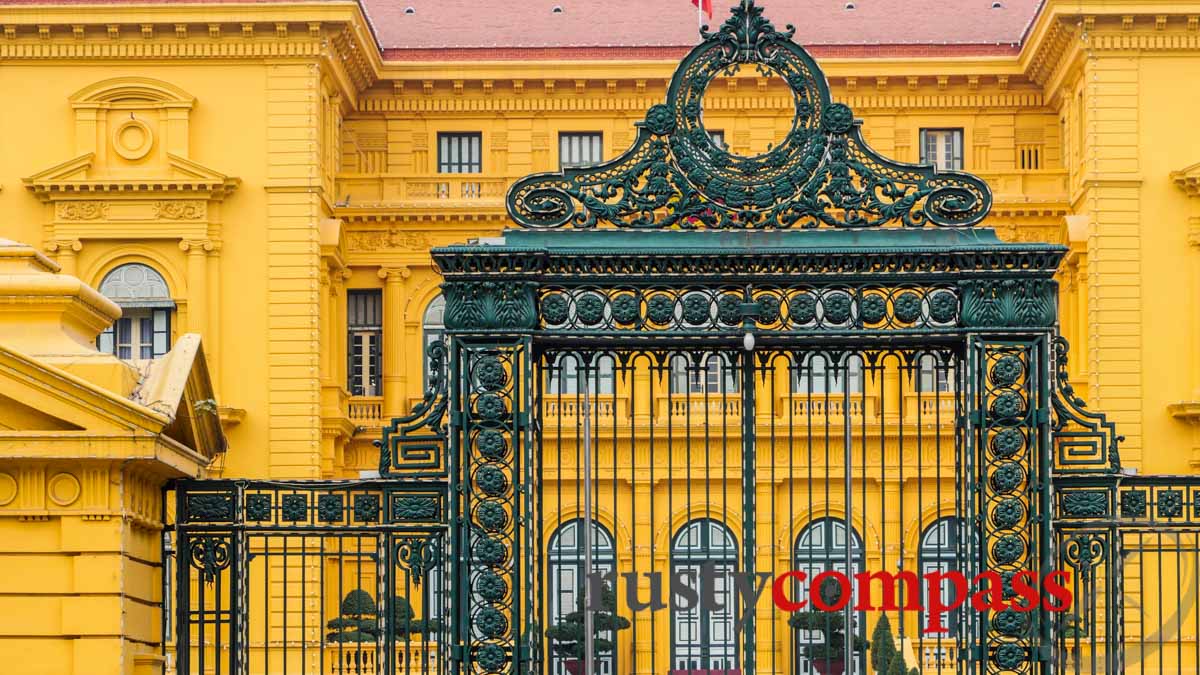
Photo: Mark Bowyer Former French Governor's Residence, Hanoi
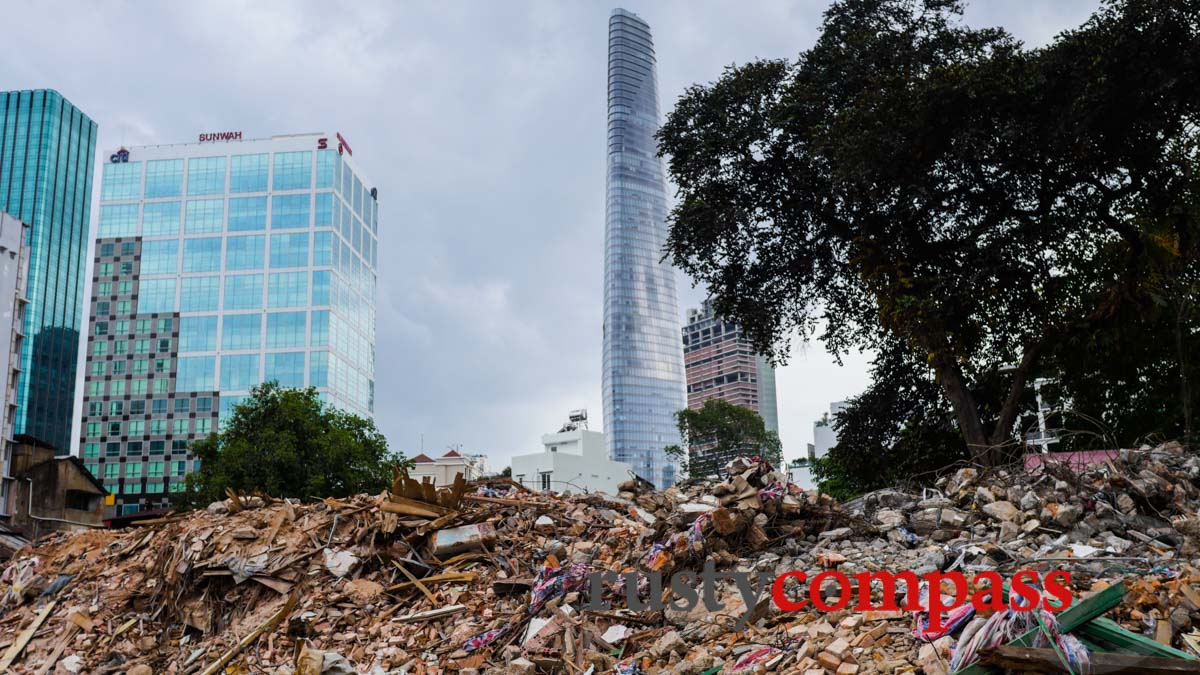
Saigon's opting for concrete and glass
Eating - our verdict, tie
Things change slowly in Hanoi - when you’re eating street food, that’s a virtue. When it comes to other types of dining - change can be good.
Vietnamese will argue forever about the merits of southern and northern food. They're quite distinct cuisines, with northerners preferring salty flavours (often powered by MSG) while southerners love their sweet flavours. As a traveller, you’re less likely to be troubled by these disagreements.
Street food - our verdict, Hanoi by a whisker
I reckon Hanoi's street food scene is more vibrant than Saigon's, but both have tons of life. Hanoi’s street eateries feel more embedded in the city fabric. It feels more natural to pull into any place with a pulse for a bite. And Hanoi’s street food dishes - bun cha, banh cuon, bun dau, cha ca, and others - though widely available in Saigon, are delicious in their home setting.
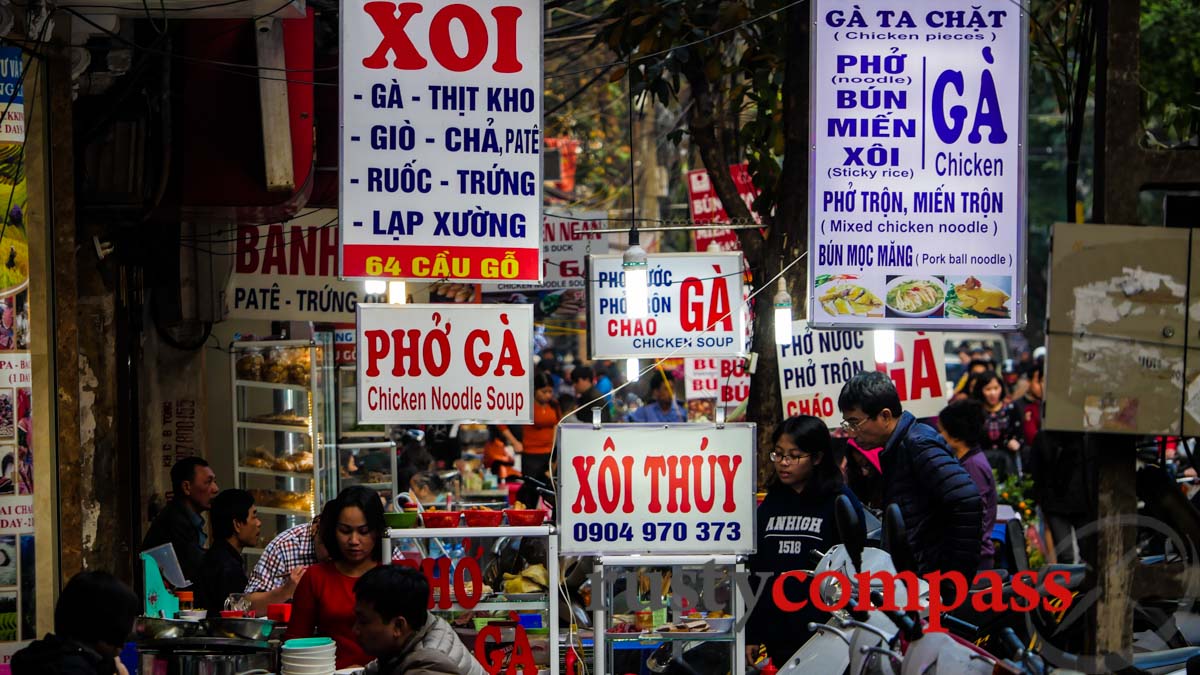
Photo: Mark Bowyer Street food in Hanoi's Old Quarter
Local restaurants - our verdict, Saigon
When it comes to taking Vietnamese cuisine off the street, Saigon’s well ahead. And young Saigonese restaurateurs, have created a tasty, vibrant scene, where you can enjoy authentic flavours in hip settings too.
International cuisine - our verdict, Saigon
Saigon's a clear winner here. The international food scene is buzzing and competitive. There are fantastic international eating options in District 1 and District 2. A lot of it's well priced by regional standards too.
Restaurants are constantly opening and closing in Saigon. Restaurant owners need to be on their game.
Hanoi has some great international restaurants too - but the choices are fewer and the dynamism is less visible.
Check our guides to eating in Saigon and Hanoi for detailed, handpicked recommendations.
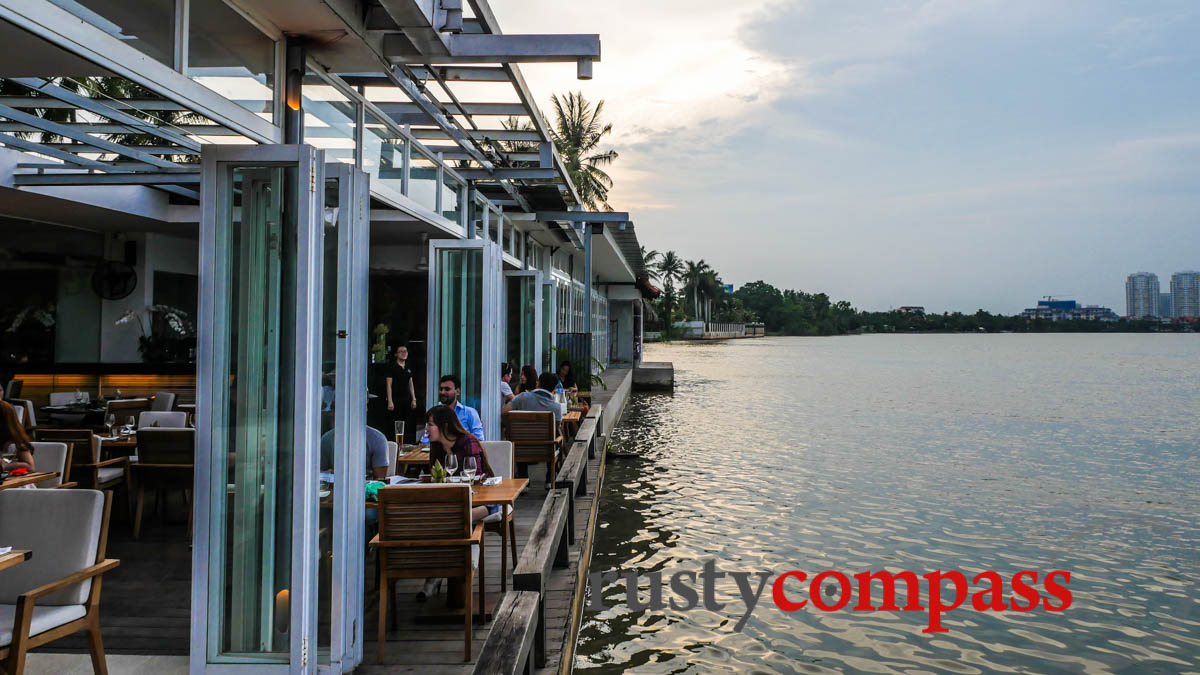
Photo: Mark Bowyer The Deck - Saigon
Cafes - our verdict, Saigon
Like the restaurant scene, Saigon's cafe scene is buzzing, competitive and increasingly innovative - both in coffee and design.
Hanoi has some cool cafes as well - but it’s a smaller less vibrant scene.

Photo: Mark Bowyer The Workshop - Saigon's coffee scene is flourishing
Nightlife - our verdict, Saigon
Saigon wins this easily. The city has a surprisingly broad range of nightlife options from dressed-up mega-clubs to rooftop bars, to more earthy lounges, live music and craft beer drinkeries. Hanoi’s options are more limited and less diverse. Check out our events pages and you'll see what we mean.
Hotels - our verdict, tie
Hanoi and Saigon offer an excellent selection of luxurious international and quality mid-priced hotels. Hotels of character, design and stylistic ambition are harder to come by.
There’s a good supply of Airbnb listings in both cities - and you’ll find some of these offer character that’s lacking in the large hotels.
The Sofitel Metropole in Hanoi is the only colonial era hotel in either city that has tried to make something of its amazing architecture and history. It’s probably the best city hotel in Vietnam.
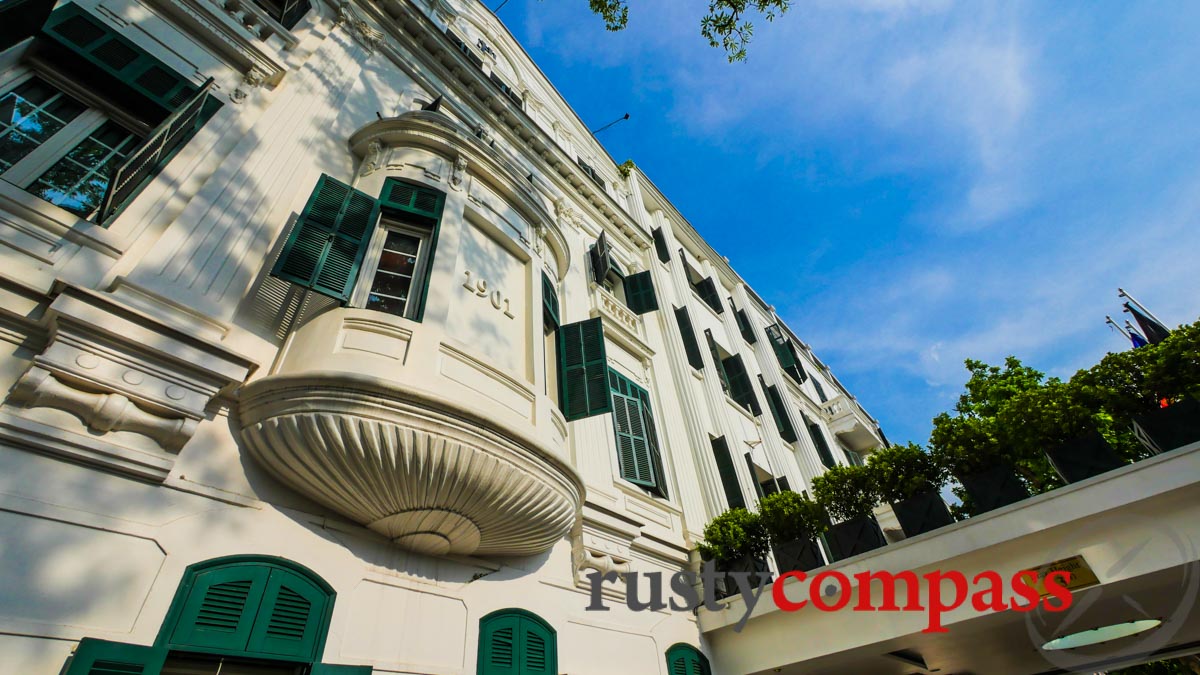
Photo: Mark Bowyer Sofitel Legend Metropole Hotel, Hanoi
Saigon’s colonial era legends, The Continental and The Majestic have been waiting decades for an upgrade to match their architectural and historical value.
If you’re travelling on a budget of around 50US per night and less, both cities offer a plethora of friendly, comfortable, places to stay. Just make sure you get a window. Smaller hotels in both cities suffer acute window shortages.
Things to do nearby - our verdict, Hanoi
Hanoi cleans up easily here. Stunning places like Halong Bay, Mai Chau and Ninh Binh, are a few short hours away. Some of our favourite places - Sapa, Ha Giang and Dien Bien Phu are all accessed from Hanoi too.
Meanwhile, Saigon offers the Disneyesque experience of the Cu Chi tunnels with its tacky firing range, and the Mekong Delta.
The Delta was once a favourite spot, but it’s getting harder to find magic there without heading deeper towards places like Tra Vinh and Chau Doc.

Photo: Mark Bowyer Halong Bay - nearby Hanoi

Photo: Mark Bowyer Ha Giang - north of Hanoi

Photo: Mark Bowyer Ninh Binh - near Hanoi
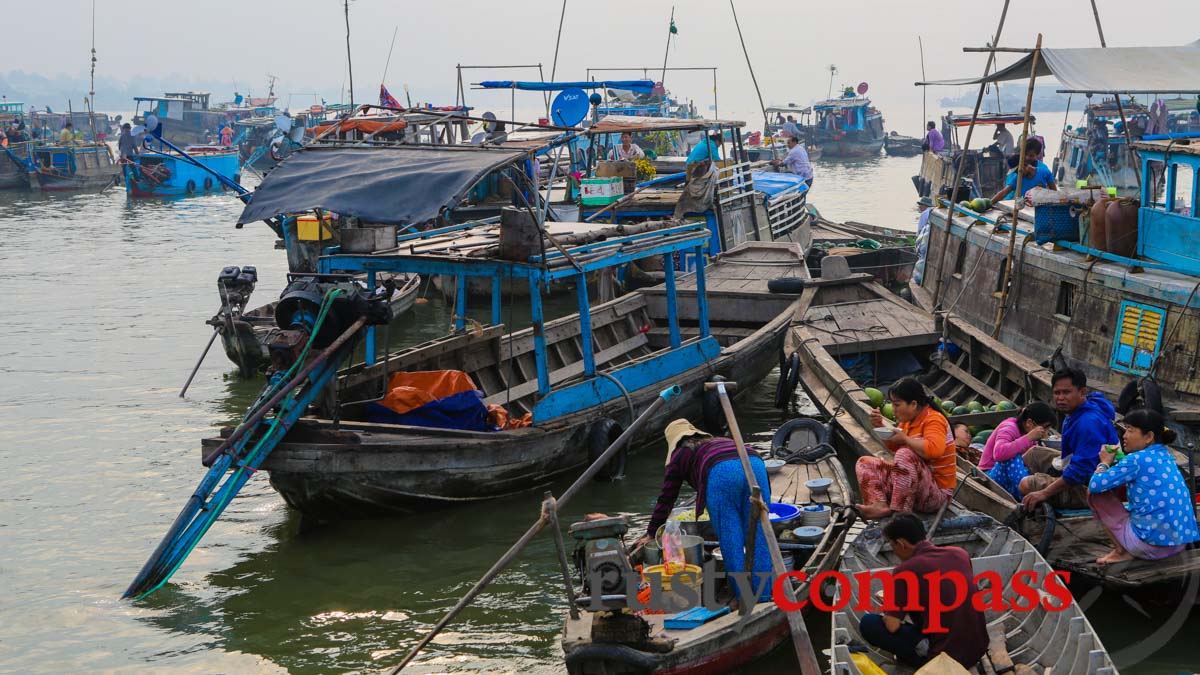
Photo: Mark Bowyer Chau Doc floating market - accessed from Saigon
Arts and Culture - our verdict, tie
The cliche has it that Hanoi is Vietnam’s centre of arts and creativity, and Saigon is the commercial centre. The reality is quite different.
Hanoi certainly has the historical cultural legacy, but there’s a vibrant artistic scene in Saigon too. And a lot of Hanoi artists move south to Saigon because they find it a more amenable creative environment.
Check out our events lists in Hanoi and Saigon for information about exhibitions and performances. There are interesting things happening in both cities.
You won’t find major writer’s festivals, music festivals, international bookstores or other large scale cultural institutions or events in Vietnam. The official attitude to cultural life is ambivalent - arts and event organisers negotiate a complicated regulatory environment.
It’s a shame because Vietnam’s cultural and artistic talents are rich - and waiting to express themselves. And there’s a growing appetite among the young for more than state-sanctioned rampant consumerism and selfies.
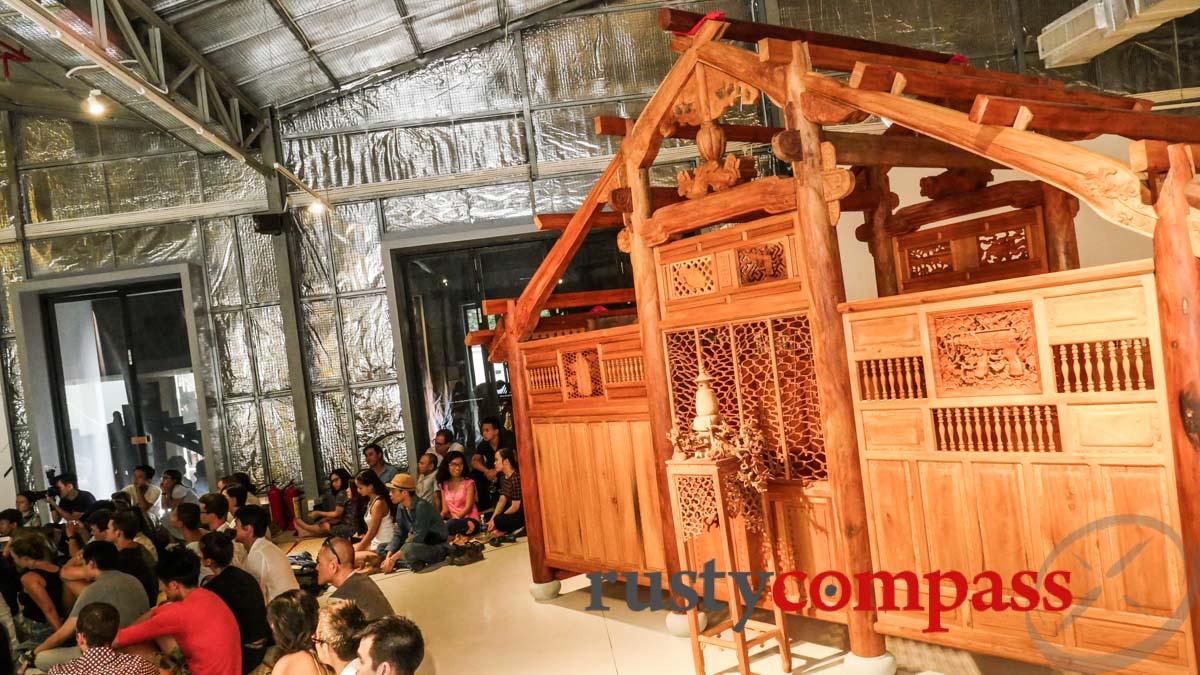
Photo: Mark Bowyer The Factory Contemporary Arts Centre, Saigon
People - our verdict, tie
The people you meet on the road will be a highlight of travels in Vietnam - both in Hanoi and Saigon. So this is a tough one.
Saigonese definitely have a sunnier disposition and their city has an energy and atmosphere of opportunity that attracts people from all across the country, and from around the world. This alone may be sufficient reason to visit Saigon.
There is an equal chance that a person you meet in Saigon will be a local, or from somewhere else in the country. The city is a magnet for people from all over Vietnam looking for opportunity. That tells you something.
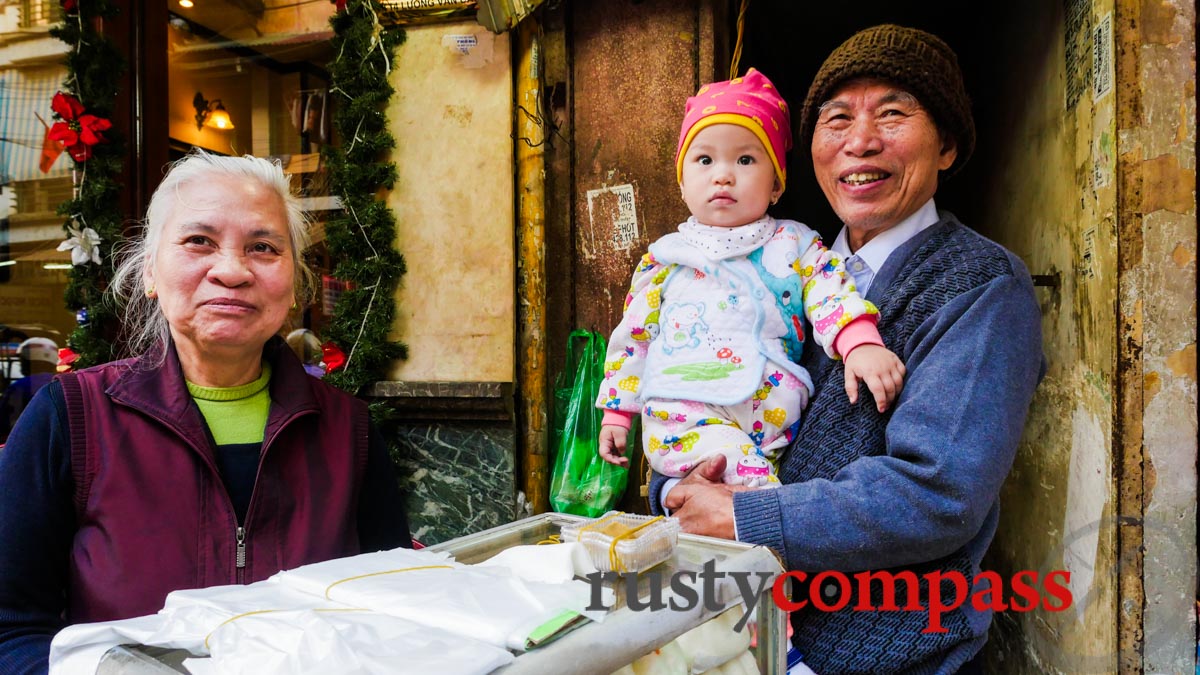
Photo: Mark Bowyer Preparing for Tet - Hanoi, 2016
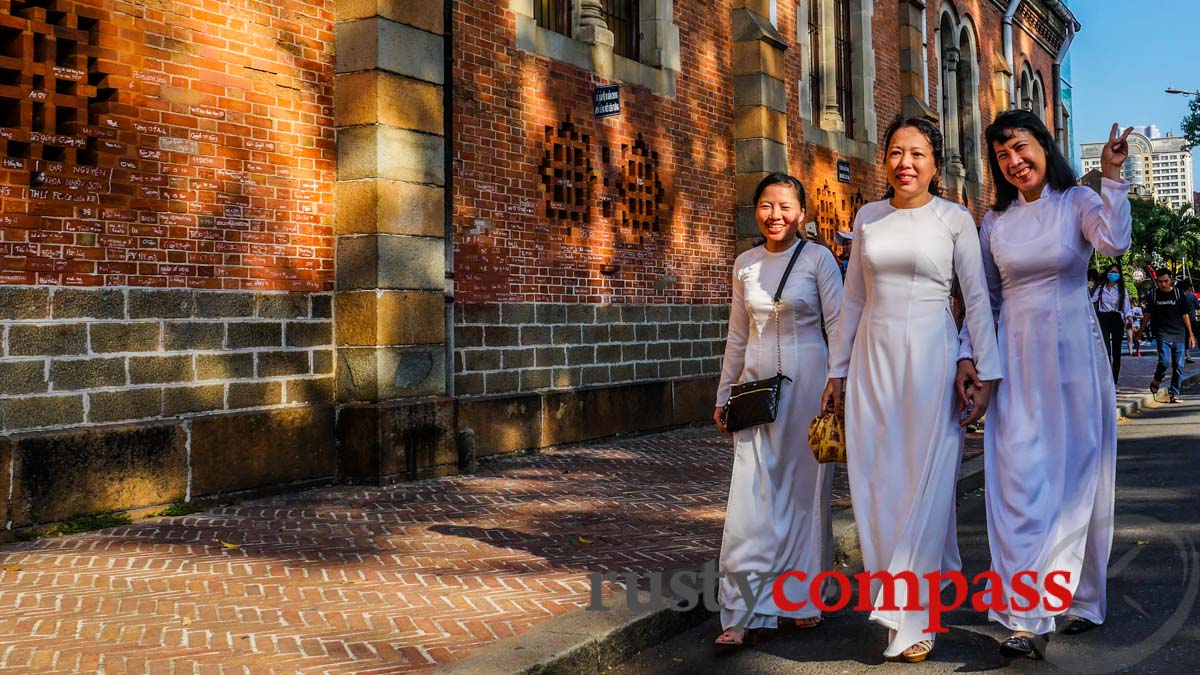
Photo: Mark Bowyer Friendly Saigon, Vietnam
Hanoi meanwhile attracts people from surrounding provinces, but there is very little chance you will encounter someone from Saigon and the south living in Hanoi - something for amateur anthropologists to ponder.
If the continuing march to Saigon of young Vietnamese is a measure, Saigon wins the liveability race hands down - in Vietnamese eyes too.
But we're talking about travelling here, not living, and I find the people you meet in Saigon and Hanoi, equally engaging, for different reasons. They’re the real source of Vietnam's magic.
Walking and public space - our verdict, Hanoi
Hanoi wins this one easily. Apart from its mandated "walking street", Saigon doesn't even seem to be trying to reach out to travellers who like to explore on foot.
Hanoi's Old Quarter might be a challenging walking experience but Hoan Kiem Lake, Ba Dinh District, and much of the area known as the French quarter, combine wide, walkable streets, with amazing street life and architecture. And Hanoi’s walking cred is improving too. The Old Quarter and the area around Hoan Kiem Lake are closed to traffic on weekends.
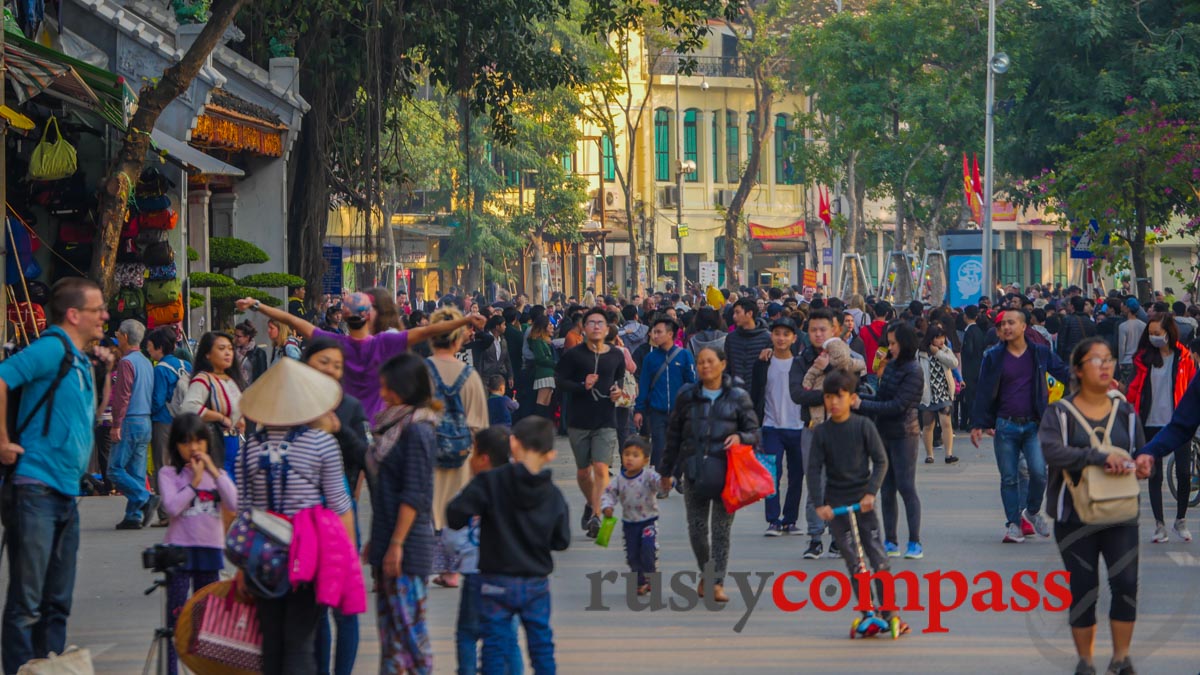
Photo: Mark Bowyer Walking in Hanoi
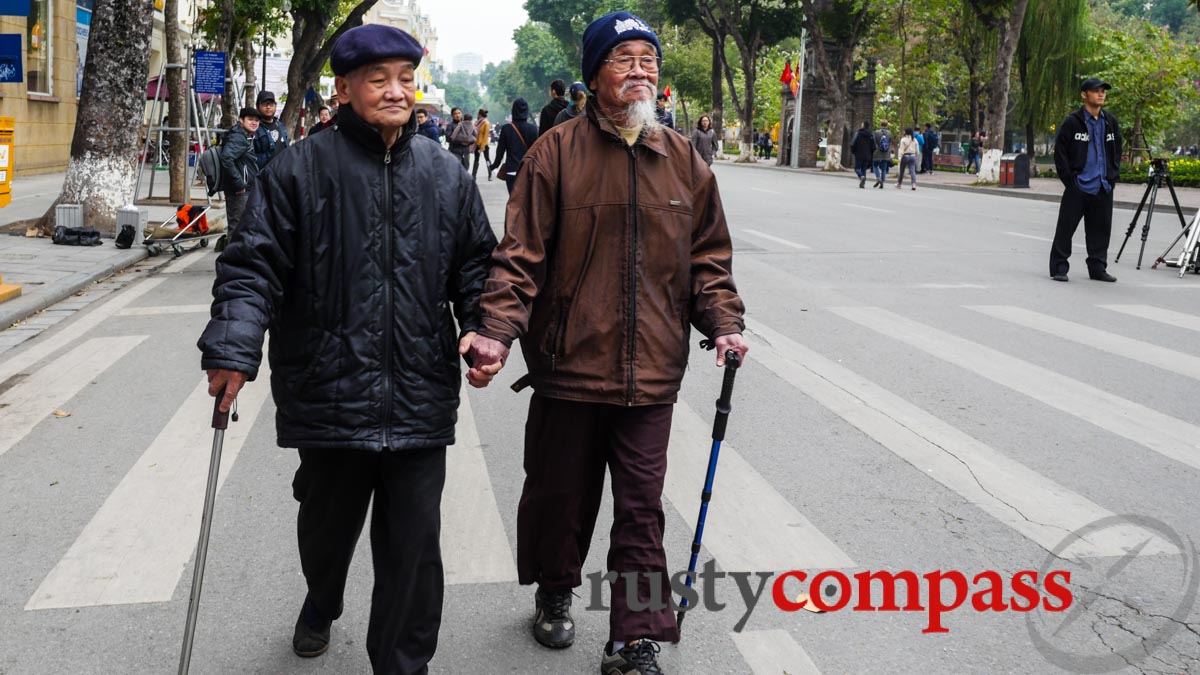
Photo: Mark Bowyer Two delightful old walkers - Hanoi
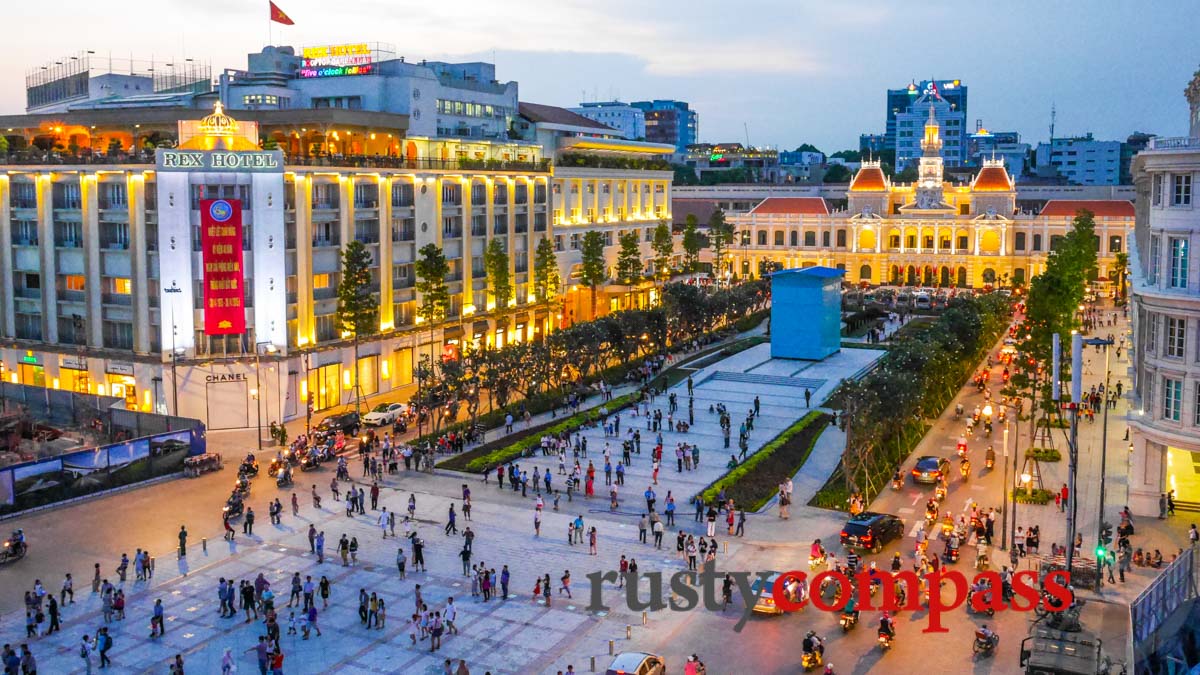
Photo: Mark Bowyer Nguyen Hue Walking Street - Saigon
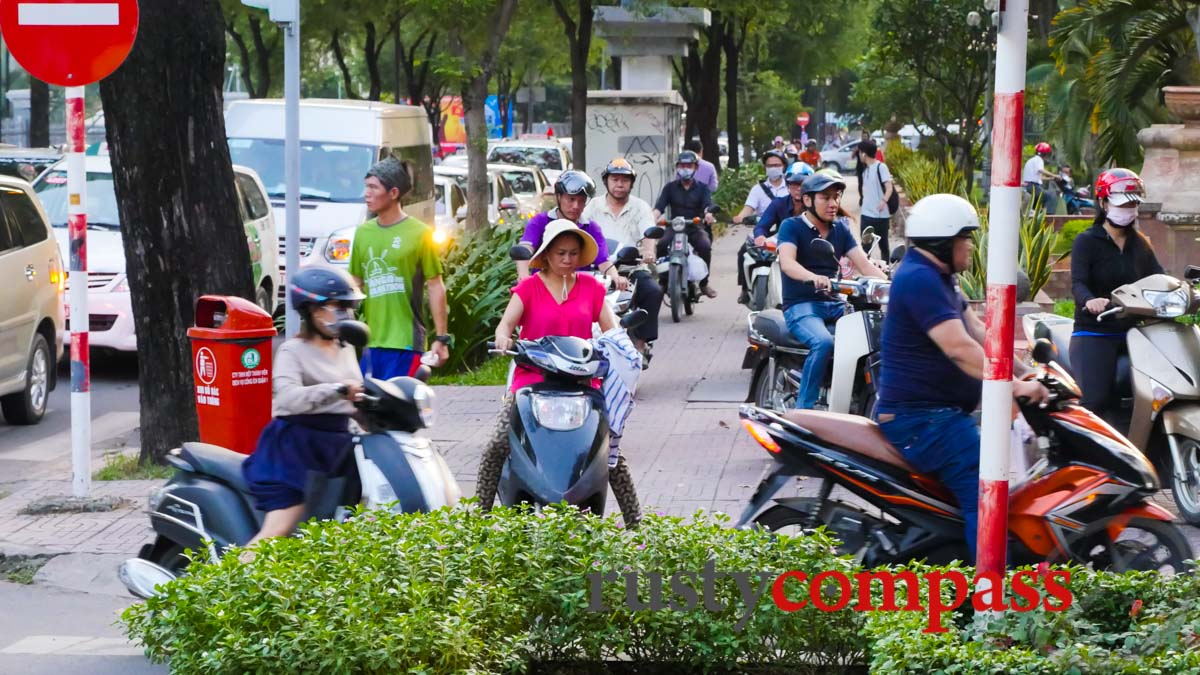
Photo: Mark Bowyer This is the space for walking in Saigon
Saigon seems to be headed in the opposite direction. The construction of the metro was always going to cause upheaval - but there seems to have been no effort to try to soften the impact.
Saigon’s population is booming - apartments and office towers dominate the skyline - but the parks, cultural spaces and road grid in the downtown area, have barely improved since the French left in the 1950s.
And the motorbike invasion of Saigon’s sidewalks is becoming ever more widespread and dangerous.
There are moves afoot to improve the state of the pavements in both cities. We await the results. As of last week, motorbikes were charging along Saigon sidewalks along key tourist streets with impunity. Officials seemed to be focused on removing street vendors - a feature of the city many find charming.
Crime and safety - our verdict, no winner
Vietnam is a safe destination in terms of violent crime against travellers. That's a big deal.
But too many travellers fall victim to theft and scamming.
Dependable data on crime against travellers is non-existent as far as we can work out. A huge amount of crime against travellers goes unreported.
So we'll work off personal experience and anecdotal experiences from years of talking with travellers and industry players.
You're more likely to get openly robbed in Saigon (phone, camera or backpack stolen by a ride-by motorcycle etc). And don't think the centre of town, Nguyen Hue walking street, or the backpacking district are safe - this is where the bulk of the thefts take place.
Ride-by motorcycle theft is uncommon in Hanoi. In the capital, you're more likely to get scammed (airport scams, hotel scams, Ha Long Bay boat scams, tour scams, tripadvisor scams).
Taxis are are another place where you’re likely to encounter problems in both cities. Keep your eye on maps if you can.
Ironically, the dodgiest taxis seem to have won concessions to collect tourists from the most popular tourist spots - places like Hanoi’s Ba Dinh Square (Ho Chi Minh Museum, museum, Ho Chi Minh’s house on stilts), Saigon’s War Remnants Museum and Ben Thanh Market. Airports can be a shemozzle as well. Airport bus services may well be a better choice both for reliability and price.
You definitely should be careful with your mobile phone and personal stuff while walking Saigon's streets. In Hanoi, choose your tours carefully. Shop around.
Environment - our verdict, no winner
Vietnam has notched up economic growth numbers second only to its northern neighbour China over the past two decades. And it's now facing a similar, if less severe, deterioration in its air and water quality.
Hanoi's air is considered dangerous for much of the year. Saigon's air quality is marginally better.
It wasn't always this way. And hopefully some steps will be taken to deal with a growing issue of concern for residents of the two cities.
Plastic is a scourge in both cities - with no efforts to date to reduce amounts of plastic waste.
Both Hanoi and Saigon are global holdouts when it comes to smoking permissiveness. Non-smoking bars and restaurants are becoming more common in Saigon. They’re still rare in Hanoi. This is especially odd since the government passed laws banning smoking years ago.
Thanks for reading!
For more information on Hanoi and Saigon, check out our Hanoi travel guide here and our Saigon travel guide here.

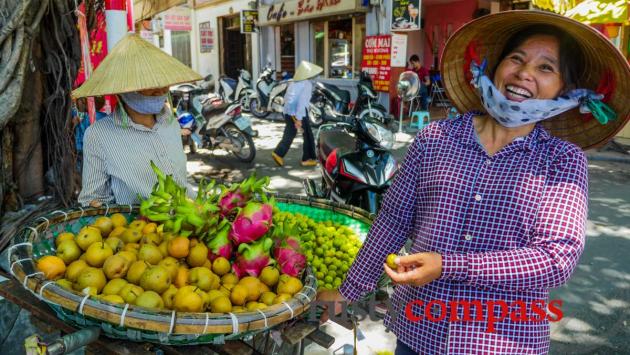



There are no comments yet.